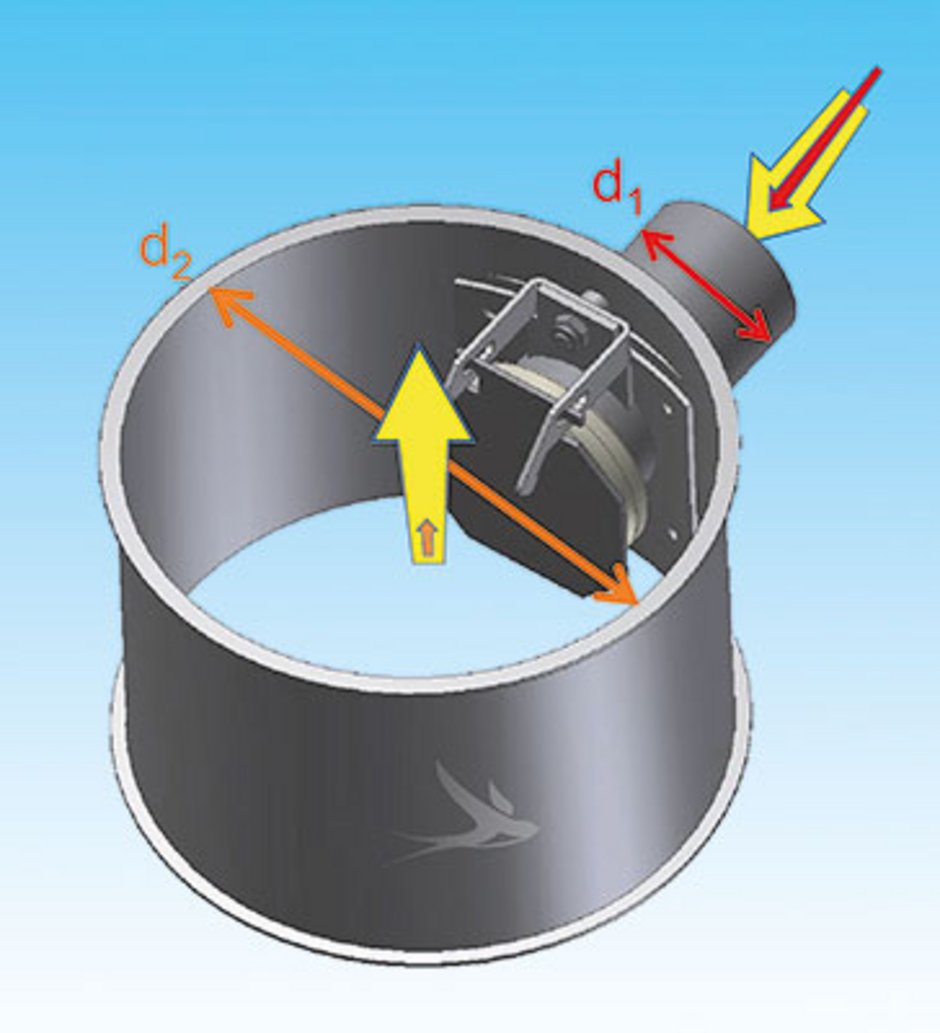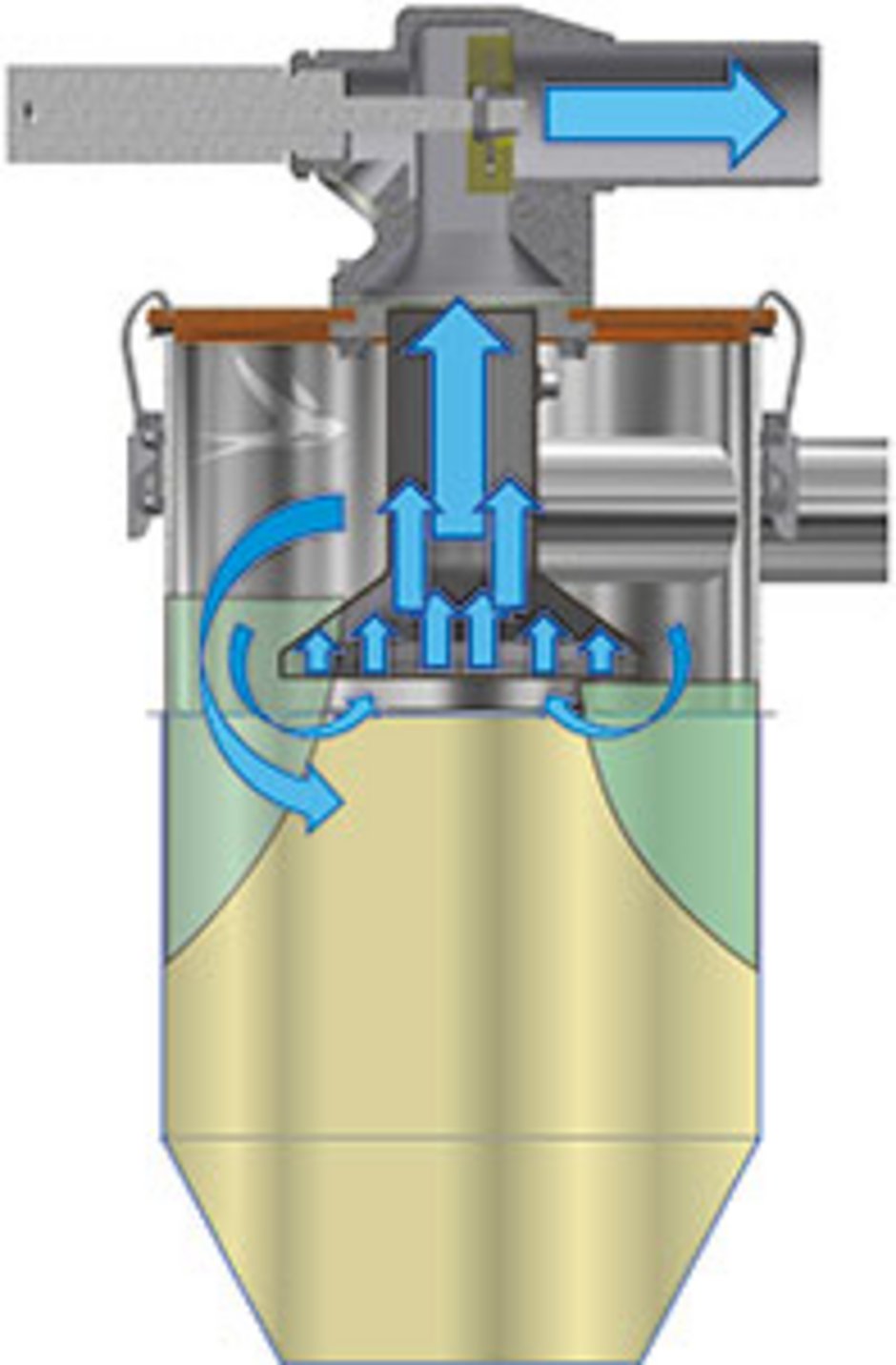43 - How is the plastic granulate separated from the conveying air?

In the broadest sense, operation of a hopper loader can be compared with a vacuum cleaner – but with one significant difference: in the vacuum cleaner, the dust bag collects the aspirated particles while the material to be conveyed must be separated from the air flow in the hopper loader in such a way that large quantities can also easily be further processed. Incidentally, this is the origin of the frequently used term “separator”, which describes the separation of the material from the air flow.
One way of separating the material from the air flow is to reduce the air speed at the end of the conveying route (in the hopper loader) by increasing the diameter of the pipeline (Image1). It is important here that the speed of the conveying air falls below the suspended speed of the plastic granulate.
Only then does the material fall out of the air flow in the hopper loader and accumulates above the outlet of the hopper loader before it is removed at the end of the conveying cycle. In turn, the suspended speed depends, among other things, on the mass, the density and the aerodynamic shape (cw or drag coefficient) of the plastic granulate. For example, the suspended speed of PS granulate (3 mm, 1 kg/dm3, cw = 0.6) is 7.4 m/s.
Particles in the material to be conveyed with a suspended speed less than the vertical air speed are removed from the hopper loader with the air flow via the vacuum connection. Depending on the individual application, this may also be required to reduce the dust content before processing. If the proportion of fine material is to remain in the product, suitable filters with a cleaning mechanism are to be installed in the hopper loader. However, to prevent granulate from being sucked into the vacuum line when the hopper loader is overfilled, a protective strainer should always be installed.

Another way of separating the material from the air flow uses a cyclone effect and the centrifugal forces thus produced (Image2). The prerequisite for this is a tangential material inlet which forces the material on the inner wall of the hopper loader onto a circular path. This effect is reinforced by a trumpet-shaped insert on the cover of the hopper loader. The air inlet of the trumpet is located below the material inlet. The design of the trumpet reduces the free cross-sectional area in the inlet area, which increases the centrifugal acceleration. At the same time, the trumpet directs the granulate into a downward spiral trajectory.
This concept is particularly suitable for materials with high proportions of fine particles. Due to the additional centrifugal forces, particles are also extracted whose suspended speed is less than the air speed flowing upward. Under certain conditions, coarse bulk material can also be conveyed and separated without a filter.
The wide opening of the trumpet helps to keep the extraction speed as low as possible. Particles which were not able to be extracted via the centrifugal effect and the suspended speed of which is less than the air speed in the area of the trumpet inlet are extracted via the vacuum line and discharged in the central filter upstream of the vacuum generator. Therefore, this principle can also be used without a filter. It is also not absolutely necessary to install a protective screen. Without a screen, for example, short angel hair can be removed from the material to be conveyed.
The design of the trumpet is decisive for its effect, in particular the distance between the wide opening and the beginning of the narrower neck. This also determines the critical fill level height: too much material may block the safety screen or enter the vacuum line. For this reason, installation of a fill level sensor in the hopper loader is recommended.
You want to know how conveying equipment looks in practice? Find the answer on www.motan.com
